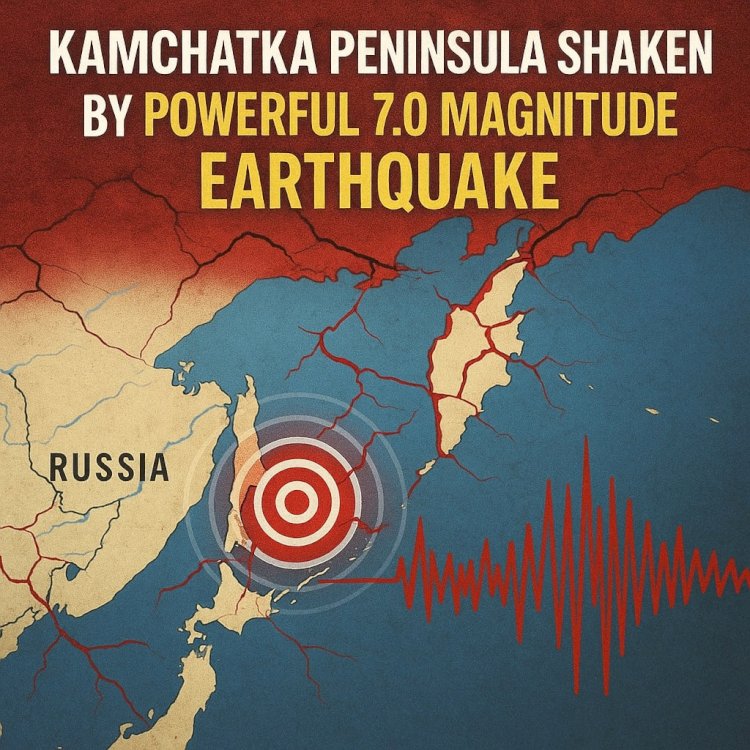Kamchatka Peninsula Shaken by Powerful 7.0 Magnitude Earthquake

Date: July 31, 2025
Massive Earthquake Rocks Russia’s Far East
A significant earthquake registering magnitude 7.0 struck near the Kamchatka Peninsula off Russia’s eastern coast today. The quake’s epicenter was located roughly 90 kilometers east of Petropavlovsk-Kamchatsky, the peninsula’s regional capital, occurring at a relatively shallow depth of about 29 kilometers. The seismic event caused noticeable tremors across the Pacific region, triggering immediate concern about aftershocks and potential tsunami impacts.
Tsunami Warnings Issued Then Downgraded
Following the earthquake, tsunami warnings were promptly issued for coastal zones within 300 kilometers of the epicenter. Regional authorities urged residents to prepare for possible tsunami waves. Fortunately, after further analysis, the threat level was reduced, and no significant tsunami impact has been confirmed. Nearby countries, including Japan, did report minor tsunami waves reaching heights up to 1.3 meters.
Seismic Shocks Trigger Volcanic Eruptions
The earthquake’s intense seismic energy also sparked volcanic activity in the region. The Shiveluch volcano, situated about 310 miles north of Petropavlovsk-Kamchatsky, erupted shortly after the quake, producing a towering ash plume extending up to five miles into the atmosphere. This led to aviation alerts and heightened safety protocols. Additionally, the Ebeko volcano in the Kuril Islands experienced an ash eruption, highlighting ongoing geological instability.
Regional and Global Precautions Mobilized
In response to the earthquake and tsunami threat, countries in the region took swift action. Japan evacuated approximately two million residents from vulnerable coastal communities, while the United States issued tsunami advisories spanning from southern California up to the Alaska-British Columbia border. These warnings have since been lifted as the situation stabilized.
The Tectonic Forces Behind Kamchatka’s Seismicity
The Kamchatka Peninsula is located on the Kuril-Kamchatka subduction zone, a highly active tectonic boundary where the Pacific Plate dives beneath the North American Plate. This geological setting makes the area one of the most earthquake-prone regions in the world. The recent magnitude 7.0 quake fits into a long history of powerful seismic events recorded in Kamchatka.
As the region recovers from today’s earthquake, experts emphasize the need for ongoing monitoring and readiness to mitigate risks posed by such natural hazards in the future.

 content-team
content-team 


















